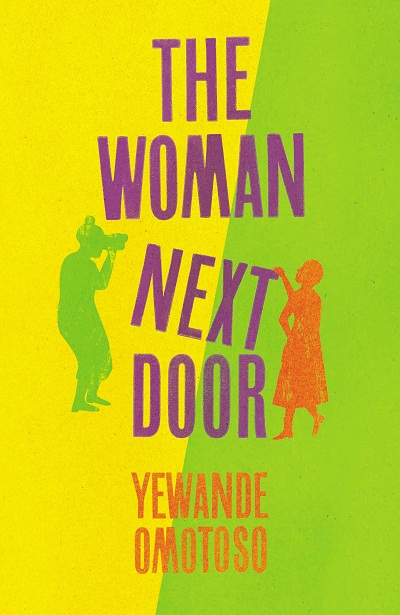BOOK REVIEW: Hard-won freedoms are sometimes a victim of circumstance
by Karin Schimke
2016-06-27 17:18:03.0
THERE are great freedoms to be enjoyed in old age: freedom from unsatisfactory couplings ushered in by the death of a partner; freedom to "moderate your hearing" and the freedom from any societal pressure to make nice.
But being in your 80s does not free you from all your material and physical needs, nor from the unsavoury task of having to deal with other people’s nonsense. And, most especially, being in your 80s often inhibits the freedom of your body to move as and how it pleases.
Omotoso’s second novel — for all the many scratchy South African social issues it touches on — is a book about freedom and how we choose to use it.
The large network of the stuff of life that lies between two neighbouring homes in an upmarket Cape Town suburb is woven almost incidentally in the narrative of The Woman Next Door: the stuff of race relations, land ownership, mistrust and faulty relationships, both intimate and social.
This is the book’s strength. It doesn’t delve into any of these enormously burdensome and seemingly intractable issues and, in avoiding getting tangled in one or several of holes in this net that makes up individual and multiple lives, the author is able to hone in on the central narrative.
This burning core then is the openly hostile relationship between Hortensia James of Number 10 Katterijn Avenue, and Marion Agostino, who lives at Number 12. For both hard-won freedoms are somewhat curtailed by circumstances beyond their control.
The two old women have a great deal in common apart from an almost-shared address — widowhood, unusually rich and stimulating careers behind them for women of their age, large disappointments and unapologetic cantankerousness — but not skin colour.
Throw any kind of otherness into an already toxic relationship and you can probably kiss any hope for happy endings goodbye. Omotoso, to the reader’s relief, does not indulge too heavily in easy resolutions, though it would be silly to ignore that the tensions between the two women are somewhat alleviated by the story’s end.
What stands between the two women from the beginning is both complex and simple: it’s that race thing. And with it, the struggle for a kind of ownership, and a right to exert your own will and desire in the world. A demand for recognition of your humanity, the mostly hopeless human need to be seen, heard and understood.
Omotoso deals deftly with these. Between Hortensia and Marion lies not, in fact, a hedge — though that is there too — but the house in which Hortensia lives and which Marion, years before, had designed, pouring all her architectural passion into a home she had envisaged and executed grandly, but in which she could never live. It stings that someone else lives there. Being old and white, it probably also stings that the someone-else is black.
A house as a symbol is pumped with meaning, of course — universal understandings of shelter, safety, family and, in a more psycho-analytical way, as a symbol of the self. That a house is the bone over which the two women — unconsciously — struggle, sets up a rich frame of reference.
There is metaphor in there, without us having to look too hard, but Omotoso pushes the complexity of the matter of identity, land and belonging, by adding another dimension: the land on which Hortensia’s house is built is subject to a land claim by the descendants of slaves. And she’s reluctant to get drawn into that issue. Race is not the only wall against which we bang our heads daily, so is class, wealth and poverty, and the various strata of privilege, ownership and belonging we draw to ourselves consciously and unconsciously.
There are servants in this story too: Agnes, who has been cleaning for Marion all her life and who is now on her deathbed, and the taciturn Bassey, Hortensia’s housekeeper. The two women also have dead husbands, whose lives shaped who they have become in old age. Omotoso deals with all of her characters with a casual, but deep empathy, even the two main characters, both more married now to their selfishness and bitterness than they ever were to their husbands.
What emerges is a story that neither bores right down into cause and effect, nor brushes these lightly aside. Omotoso builds her narrative on a single relationship — that between two women — but evokes a mini-universe of misunderstanding and difficulty in all human relations.
Although Hortensia actively nurses her defensive rage and Marion is stubbornly set in her own entitled ways, there is inevitably room and possibility, Omotoso seems to say, for a bit of give, a bit of adjustment. Not ground-shaking change, but the small, subtle movements humans are free to make as they shuffle along towards the final relief from life’s inherent intractability.
Omotoso’s gift for subtlety and warmth — already demonstrated in her award-winning debut novel Bom Boy — grows even more fully into itself in her second novel. Full of the pithy and sometimes brutal observations of two women who are too close to death to bother with niceties, it is also unexpectedly amusing.

Picture: THINSKTOCK
THERE are great freedoms to be enjoyed in old age: freedom from unsatisfactory couplings ushered in by the death of a partner; freedom to "moderate your hearing" and the freedom from any societal pressure to make nice.
But being in your 80s does not free you from all your material and physical needs, nor from the unsavoury task of having to deal with other people’s nonsense. And, most especially, being in your 80s often inhibits the freedom of your body to move as and how it pleases.
Omotoso’s second novel — for all the many scratchy South African social issues it touches on — is a book about freedom and how we choose to use it.
The large network of the stuff of life that lies between two neighbouring homes in an upmarket Cape Town suburb is woven almost incidentally in the narrative of The Woman Next Door: the stuff of race relations, land ownership, mistrust and faulty relationships, both intimate and social.
This is the book’s strength. It doesn’t delve into any of these enormously burdensome and seemingly intractable issues and, in avoiding getting tangled in one or several of holes in this net that makes up individual and multiple lives, the author is able to hone in on the central narrative.
This burning core then is the openly hostile relationship between Hortensia James of Number 10 Katterijn Avenue, and Marion Agostino, who lives at Number 12. For both hard-won freedoms are somewhat curtailed by circumstances beyond their control.
The two old women have a great deal in common apart from an almost-shared address — widowhood, unusually rich and stimulating careers behind them for women of their age, large disappointments and unapologetic cantankerousness — but not skin colour.
Throw any kind of otherness into an already toxic relationship and you can probably kiss any hope for happy endings goodbye. Omotoso, to the reader’s relief, does not indulge too heavily in easy resolutions, though it would be silly to ignore that the tensions between the two women are somewhat alleviated by the story’s end.
What stands between the two women from the beginning is both complex and simple: it’s that race thing. And with it, the struggle for a kind of ownership, and a right to exert your own will and desire in the world. A demand for recognition of your humanity, the mostly hopeless human need to be seen, heard and understood.
Omotoso deals deftly with these. Between Hortensia and Marion lies not, in fact, a hedge — though that is there too — but the house in which Hortensia lives and which Marion, years before, had designed, pouring all her architectural passion into a home she had envisaged and executed grandly, but in which she could never live. It stings that someone else lives there. Being old and white, it probably also stings that the someone-else is black.
A house as a symbol is pumped with meaning, of course — universal understandings of shelter, safety, family and, in a more psycho-analytical way, as a symbol of the self. That a house is the bone over which the two women — unconsciously — struggle, sets up a rich frame of reference.
There is metaphor in there, without us having to look too hard, but Omotoso pushes the complexity of the matter of identity, land and belonging, by adding another dimension: the land on which Hortensia’s house is built is subject to a land claim by the descendants of slaves. And she’s reluctant to get drawn into that issue. Race is not the only wall against which we bang our heads daily, so is class, wealth and poverty, and the various strata of privilege, ownership and belonging we draw to ourselves consciously and unconsciously.
There are servants in this story too: Agnes, who has been cleaning for Marion all her life and who is now on her deathbed, and the taciturn Bassey, Hortensia’s housekeeper. The two women also have dead husbands, whose lives shaped who they have become in old age. Omotoso deals with all of her characters with a casual, but deep empathy, even the two main characters, both more married now to their selfishness and bitterness than they ever were to their husbands.
What emerges is a story that neither bores right down into cause and effect, nor brushes these lightly aside. Omotoso builds her narrative on a single relationship — that between two women — but evokes a mini-universe of misunderstanding and difficulty in all human relations.
Although Hortensia actively nurses her defensive rage and Marion is stubbornly set in her own entitled ways, there is inevitably room and possibility, Omotoso seems to say, for a bit of give, a bit of adjustment. Not ground-shaking change, but the small, subtle movements humans are free to make as they shuffle along towards the final relief from life’s inherent intractability.
Omotoso’s gift for subtlety and warmth — already demonstrated in her award-winning debut novel Bom Boy — grows even more fully into itself in her second novel. Full of the pithy and sometimes brutal observations of two women who are too close to death to bother with niceties, it is also unexpectedly amusing.


















